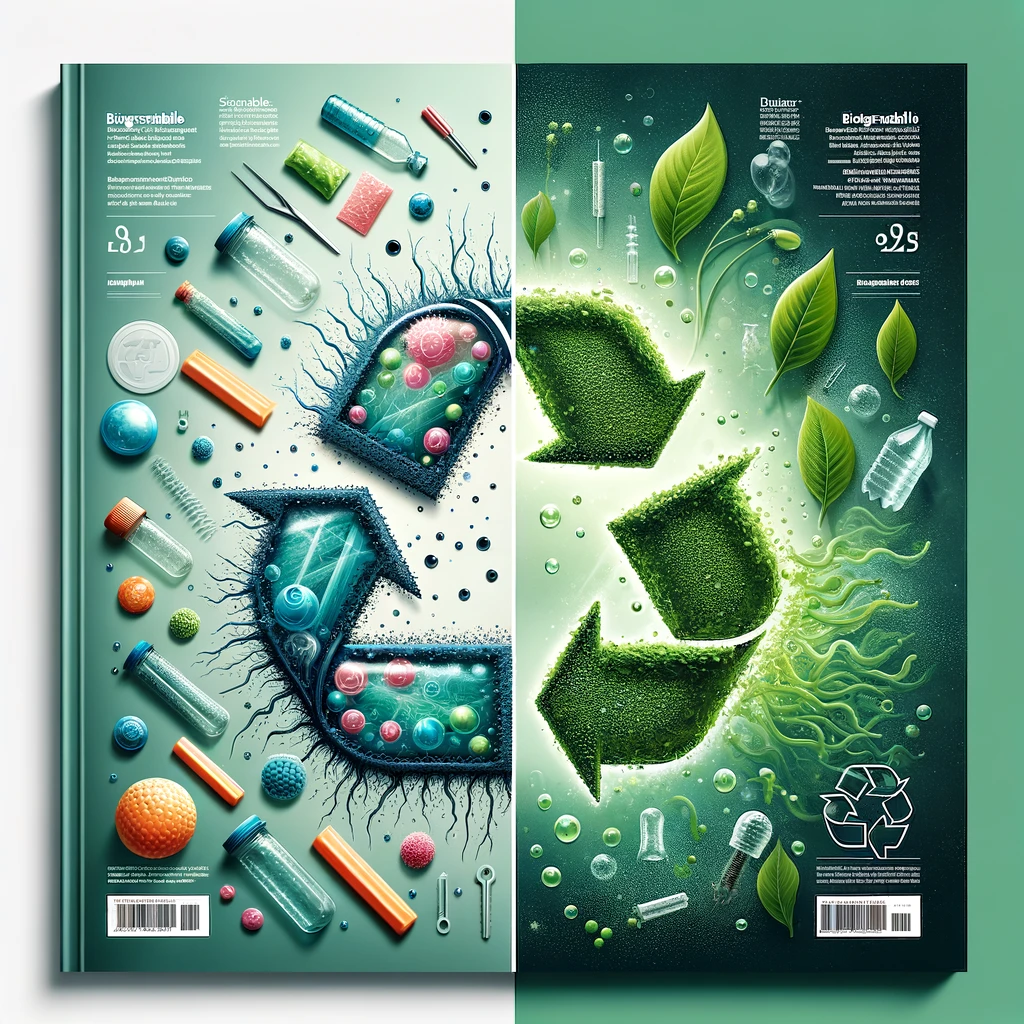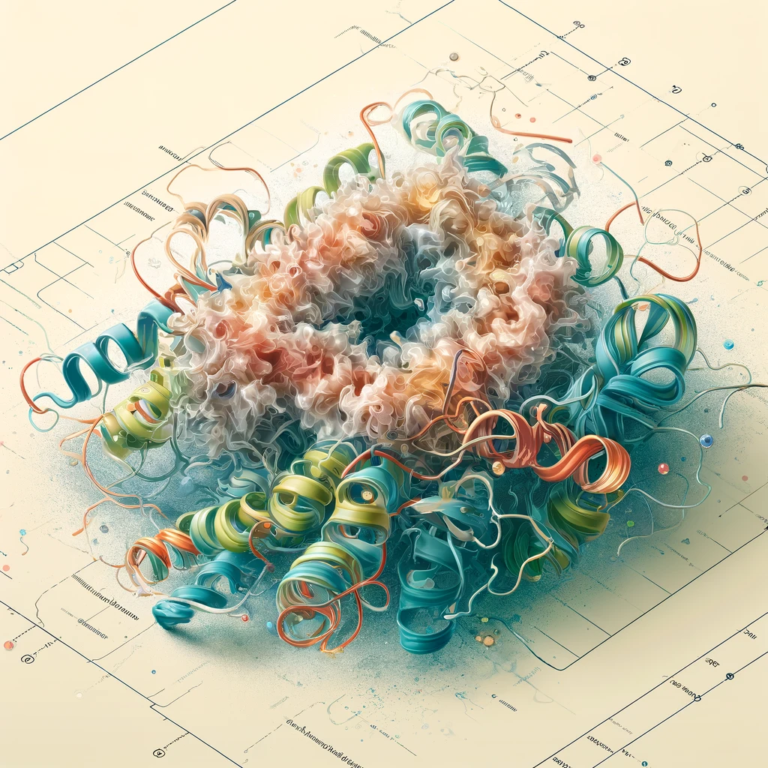The Rise of Biodegradable Plastics
This review looks at biodegradable plastics, including their varieties, degradation mechanisms, and environmental benefits. It discusses issues and future directions for improving performance and lowering ecological footprints.

Introduction to Biodegradable Plastics
Biodegradable plastics represent a significant achievement in materials science, offering an environmentally benign alternative to standard plastics manufactured from fossil fuels. These biodegradable plastics are often created utilizing synthetic processes or renewable raw materials to mimic the qualities of traditional petroleum-based plastics or to produce new polymers (Worch & Dove, 2020). The significance of biodegradable plastics lies in their ability to combat environmental pollution and promote sustainability by lowering reliance on non-degradable polymers (Hoe et al., 2019).
The transition to biodegradable plastics is critical due to traditional plastics’ negative impacts on the environment, notably in terms of plastic pollution. Plastics’ material qualities have led to their widespread use in a variety of industries, contributing to contamination across ecosystems (Millican and Agarwal, 2021). Common plastics have serious environmental repercussions, emphasizing the need for sustainable alternatives such as biodegradable plastics to reduce pollution generated by typical polymers (Erni-Cassola et al., 2019).
Biodegradable plastics offer a viable answer to the environmental issues raised by conventional plastics. It is critical to realize that biodegradable plastics breakdown in certain settings and durations that can vary. This diversity emphasizes the significance of adequate disposal procedures and waste management strategies for ensuring biodegradable plastics’ efficacy in decreasing environmental harm (Samantaray et al., 2021).
In the pursuit of sustainable materials, biodegradable plastics have gained popularity as a potential replacement for regular plastics. There is increasing interest in bio-based biodegradable plastics as a possible alternative to unsustainable materials (Mazhandu et al., 2020). There are challenges in manufacturing biodegradable packaging, with traditional plastics having cost and technical benefits that biodegradable plastics seek to match (Siddiqui et al., 2023).
The transition to biodegradable plastics is being driven not only by environmental concerns, but also by the demand for sustainable solutions in a variety of industries. Researchers are looking at biodegradable polymers to replace hazardous and non-biodegradable conventional plastics in applications like as food packaging (Mahajan et al., 2023). Studies have looked into the environmental degradation of certain biodegradable copolyesters, revealing light on the link between composition and degradation (Wang, 2024).
The creation and use of biodegradable plastics is an important step in reducing environmental pollution and promoting sustainability. These novel materials represent a promising alternative to standard plastics, with the ability to address the pressing issues raised by plastic waste. Industries and policymakers may work together to create a greener, more sustainable future by harnessing ideas from biodegradable plastic research.
Types and Mechanisms of Biodegradation
Biodegradable plastics include a wide range of polymers that disintegrate under specified conditions, providing a more sustainable alternative to standard plastics. Polylactic acid (PLA) and polyhydroxyalkanoates (PHA) are examples of biodegradable plastics made from renewable resources, according to Morohoshi et al. (2022). These biodegradable plastics serve an important role in alleviating environmental concerns about plastic pollution.
Microorganisms in natural surroundings act on these materials to biodegrade them. Marine microorganisms colonize both non-biodegradable and biodegradable plastics, with particular biodegradable polymers, such as AA-OXO and PHBV, showing higher colonization rates by specific bacteria than non-biodegradable equivalents (Dussud et al., 2018). Hydrocarbonoclastic bacteria such as Oceanospirillales and Alteromonadales have been frequently detected on plastic surfaces, indicating a potential role in biodegradation processes (Wright et al., 2020).
The degradation of biodegradable plastics is regulated by a number of factors, including polymer properties, the presence of organisms, and environmental conditions. For example, the biodegradation of polyhydroxyalkanoates (PHA) in saltwater has been investigated, indicating microorganisms’ ability to digest these bioplastics efficiently (Tanadchangsaeng & Pattanasupong, 2022). Furthermore, the biodegradation of polylactic acid (PLA) films in soil was investigated, underlining the necessity of understanding the degradation mechanisms of specific biodegradable materials (Abdelrahman & Salem, 2015).
Environmental deterioration research have shown that different types of degradable plastics degrade differently over time (Napper & Thompson, 2019). While certain biodegradable plastics degrade, others may remain unchanged under particular experimental settings (Odobel et al., 2021). Microorganisms such as Pseudomonas aeruginosa have been shown to efficiently depolymerize numerous plastic kinds (Lee et al., 2020).
Biodegradation of biodegradable plastics is a complicated combination of microbes, polymer characteristics, and environmental variables. Understanding the many types of biodegradable plastics, their degradation mechanisms, and the roles of microorganisms in these processes is critical for establishing long-term solutions to plastic pollution and encouraging environmental stewardship.
Challenges and Future Perspectives
Biodegradable plastics represent a viable answer to the environmental problems connected with regular plastics. However, various obstacles prevent their widespread adoption and commercial success. One of the most significant issues is the expense of production. Biodegradable plastics may be more expensive to create than conventional plastics due to the utilization of renewable resources and specialized production procedures (Agarwal, 2020). This cost element reduces their market competitiveness and prevents widespread adoption.
Another major difficulty is the performance of biodegradable polymers. While these materials have improved in imitating the qualities of typical plastics, they still have limitations in terms of strength, hardness, modulus, and heat resistance (Kuang et al., 2022). Improving the performance characteristics of biodegradable polymers is critical for broadening their applications across industries and ensuring they meet the necessary standards.
Another major issue with biodegradable polymers is the rate of biodegradation. The rate at which these materials decay in different environments varies, influencing their usefulness in decreasing plastic pollution (Arias et al., 2022). Understanding and managing the biodegradation process of biodegradable polymers is critical for ensuring their timely breakdown and reducing their environmental impact.
Future research paths in biodegradable plastics aim to overcome these problems while also improving commercial viability and environmental sustainability. One important area of focus is the creation of standards and rules to govern the manufacturing, usage, and disposal of biodegradable plastics (Filiciotto & Rothenberg, 2020). Establishing explicit norms and certifications can help to increase consumer trust and market acceptability of these materials.
Research initiatives also aim to develop biodegradable plastic formulations by incorporating natural polymers and nanotechnology to increase qualities and lower production costs (Kim et al., 2023). Researchers want to overcome performance limitations and increase market competitiveness for biodegradable polymers by harnessing novel technology and sustainable practices.
Furthermore, research into innovative biodegradation techniques and the interactions between biodegradable plastics and microorganisms can lead to the creation of more effective breakdown processes (Karim et al., 2021). Researchers can help progress sustainable waste management techniques by better understanding the mechanics of plastic degradation and increasing biodegradation rates.
To summarize, while biodegradable plastics have enormous promise for reducing plastic pollution, addressing present difficulties relating to cost, performance, and biodegradation rate is critical for their effective mainstream adoption. By focusing on research areas that address these difficulties while also aligning with future sustainability goals, the field of biodegradable plastics might lead the way for a more ecologically friendly and sustainable future.
References:
Abdelrahman, H. and Salem, A. (2015). Evaluation of biodegradability of polylactic acid films in the soil. Journal of Agricultural Chemistry and Biotechnology, 6(11), 461-472. https://doi.org/10.21608/jacb.2015.48467
Agarwal, S. (2020). Biodegradable polymers: present opportunities and challenges in providing a microplastic‐free environment. Macromolecular Chemistry and Physics, 221(6). https://doi.org/10.1002/macp.202000017
Arias, C., Maniglia, B., & Tadini, C. (2022). Biodegradable polymers: a review about biodegradation and its implications and applications. Packaging Technology and Science, 36(2), 81-95. https://doi.org/10.1002/pts.2699
Artham, T. and Doble, M. (2007). Biodegradation of aliphatic and aromatic polycarbonates. Macromolecular Bioscience, 8(1), 14-24. https://doi.org/10.1002/mabi.200700106
Dussud, C., Hudec, C., George, M., Fabre, P., Higgs, P., Bruzaud, S., … & Ghiglione, J. (2018). Colonization of non-biodegradable and biodegradable plastics by marine microorganisms. Frontiers in Microbiology, 9. https://doi.org/10.3389/fmicb.2018.01571
Erni-Cassola, G., Wright, R., Gibson, M., & Christie-Oleza, J. (2019). Early colonization of weathered polyethylene by distinct bacteria in marine coastal seawater. Microbial Ecology, 79(3), 517-526. https://doi.org/10.1007/s00248-019-01424-5
Filiciotto, L. and Rothenberg, G. (2020). Biodegradable plastics: standards, policies, and impacts. Chemsuschem, 14(1), 56-72. https://doi.org/10.1002/cssc.202002044
Hoe, G., Zumstein, M., Getzinger, G., Rüegsegger, I., Köhler, H., Maurer-Jones, M., … & McNeill, K. (2019). Photochemical transformation of poly(butylene adipate-co-terephthalate) and its effects on enzymatic hydrolyzability. Environmental Science & Technology, 53(5), 2472-2481. https://doi.org/10.1021/acs.est.8b06458
Karim, N., Sarker, F., Afroj, S., Zhang, M., Potluri, P., & Novoselov, K. (2021). Sustainable and multifunctional composites of graphene‐based natural jute fibers. Advanced Sustainable Systems, 5(3). https://doi.org/10.1002/adsu.202000228
Kim, M., Chang, H., Zheng, L., Yan, Q., Pfleger, B., Klier, J., … & Huber, G. (2023). A review of biodegradable plastics: chemistry, applications, properties, and future research needs. Chemical Reviews, 123(16), 9915-9939. https://doi.org/10.1021/acs.chemrev.2c00876
Kuang, T., Esmaeili, A., & Ehsani, M. (2022). Eco-friendly biodegradable polymers: sustainable future. Polymers From Renewable Resources, 13(1-2), 71-79. https://doi.org/10.1177/20412479221109875
Lee, H., Kim, H., Jeon, E., Yu, H., Lee, S., Li, J., … & Kim, D. (2020). Evaluation of the biodegradation efficiency of four various types of plastics by pseudomonas aeruginosa isolated from the gut extract of superworms. Microorganisms, 8(9), 1341. https://doi.org/10.3390/microorganisms8091341
Mahajan, A., Singh, I., & Arora, N. (2023). An integrated multi-criteria decision-making framework for the selection of sustainable biodegradable polymer for food packaging applications. Environment Development and Sustainability. https://doi.org/10.1007/s10668-023-03052-z
Mazhandu, Z., Muzenda, E., Mamvura, T., Belaid, M., & Nhubu, T. (2020). Integrated and consolidated review of plastic waste management and bio-based biodegradable plastics: challenges and opportunities. Sustainability, 12(20), 8360. https://doi.org/10.3390/su12208360
Millican, J. and Agarwal, S. (2021). Plastic pollution: a material problem?. Macromolecules, 54(10), 4455-4469. https://doi.org/10.1021/acs.macromol.0c02814
Morohoshi, T., Taniguchi, A., Sugawara, A., Suzuki, T., & Sato, S. (2022). Effects of marine sand on the microbial degradation of biodegradable plastics in seawater and biofilm communities that formed on plastic surfaces. Microbes and Environments, 37(4), n/a. https://doi.org/10.1264/jsme2.me22047
Napper, I. and Thompson, R. (2019). Environmental deterioration of biodegradable, oxo-biodegradable, compostable, and conventional plastic carrier bags in the sea, soil, and open-air over a 3-year period. Environmental Science & Technology, 53(9), 4775-4783. https://doi.org/10.1021/acs.est.8b06984
Odobel, C., Dussud, C., Philip, L., Derippe, G., Lauters, M., Eyheraguibel, B., … & Ghiglione, J. (2021). Bacterial abundance, diversity and activity during long-term colonization of non-biodegradable and biodegradable plastics in seawater. Frontiers in Microbiology, 12. https://doi.org/10.3389/fmicb.2021.734782
Samantaray, P., Little, A., Wemyss, A., Iacovidou, E., & Wan, C. (2021). Design and control of compostability in synthetic biopolyesters. Acs Sustainable Chemistry & Engineering, 9(28), 9151-9164. https://doi.org/10.1021/acssuschemeng.1c01424
Siddiqui, S., Sundarsingh, A., Bahmid, N., Nirmal, N., Denayer, J., & Karimi, K. (2023). A critical review on biodegradable food packaging for meat: materials, sustainability, regulations, and perspectives in the eu. Comprehensive Reviews in Food Science and Food Safety, 22(5), 4147-4185. https://doi.org/10.1111/1541-4337.13202
Tanadchangsaeng, N. and Pattanasupong, A. (2022). Evaluation of biodegradabilities of biosynthetic polyhydroxyalkanoates in thailand seawater and toxicity assessment of environmental safety levels. Polymers, 14(3), 428. https://doi.org/10.3390/polym14030428
Wang, Y. (2024). Relationship between composition and environmental degradation of poly(isosorbide-co-diol oxalate) (pisox) copolyesters. Environmental Science & Technology, 58(5), 2293-2302. https://doi.org/10.1021/acs.est.2c09699
Worch, J. and Dove, A. (2020). 100th anniversary of macromolecular science viewpoint: toward catalytic chemical recycling of waste (and future) plastics. Acs Macro Letters, 9(11), 1494-1506. https://doi.org/10.1021/acsmacrolett.0c00582
Wright, R., Langille, M., & Walker, T. (2020). Food or just a free ride? a meta-analysis reveals the global diversity of the plastisphere. The Isme Journal, 15(3), 789-806. https://doi.org/10.1038/s41396-020-00814-9



